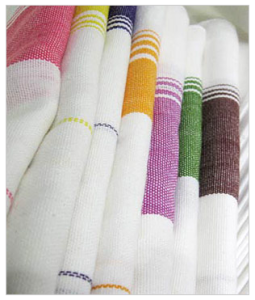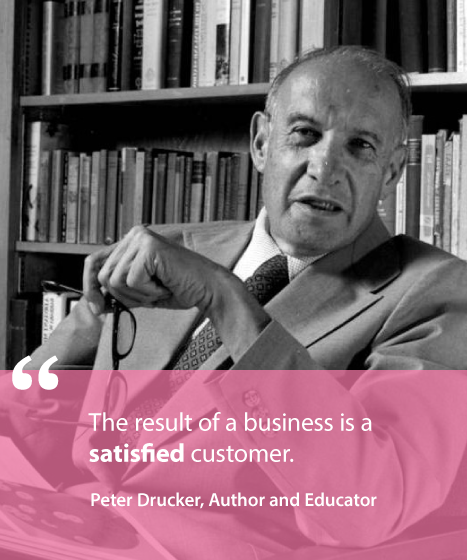 This
is a post from Laura Serino, the new Content & Community Manager
for eCommerceFuel. She’s come onboard to help me (Andrew) with
top-notch blog content and improving our private forum.
Laura joins the team with years of professional copywriting and eCommerce experience, which you can learn more about here. Expect to hear more from her in the months ahead. Take it away, Laura!
This
is a post from Laura Serino, the new Content & Community Manager
for eCommerceFuel. She’s come onboard to help me (Andrew) with
top-notch blog content and improving our private forum.
Laura joins the team with years of professional copywriting and eCommerce experience, which you can learn more about here. Expect to hear more from her in the months ahead. Take it away, Laura!
——————————————————————–
—-—-
—-————
—-—-
—-—-
Consider tube socks.
They’re white and made from cotton, ribbed with an elastic hem. They look bad with black sneakers and shorts.
There isn’t really anything exciting to say about them.
Or is there?
If you’ve ever wanted a pair of socks that say “tourist”, these are it.
Nothing comes between you and your sneakers. Except for these.
Worn by Dad, Made Cool by Michael Jordan
Cushioning your heels since 1973
It’s possible to entice a customer to purchase anything, even a pair
of socks. The most mundane item has the potential to tell a good story.
It just takes a bit of coaxing to get it out.
Read Great Copy
Before you can write great copy, you’ve got to read it. I very rarely
pull out my laptop and get straight to work on copy after reading
manufacturer’s notes or spec sheets. I won’t do that until I’ve
collected a beefy, inspirational folder of product copy first.
When I worked in magazines, one of my bosses used to always say,
“Read the New York Times before you tackle that.” She knew the
importance of reading inspired prose before you can produce it yourself.
There are many companies that write excellent, compelling product
copy. Some of my favorites include Patagonia, Groupon, ModCloth, Filson
and of course, L.L.Bean.
Finding inspiration doesn’t have to come from other e-commerce sites
though. Books, magazines, blogs, and yes, even the New York Times can
end up a valuable source of copy inspiration.
Ignore the Competition…at First
When I’m writing copy, I love to see what similar businesses are
doing. But doing that can also trip me up. How often have you looked at
competitors websites and said, “Look at what they’re doing. We need to
do that too!”
It’s very easy to fall in line with competitors and stay safe.
You’ve probably all heard the story about Schlitz beer. When the ad
guy toured the brewery he was impressed with the vast array of machinery
and technology that went into brewing. He asked if they were the only
company doing that. The brewmaster said no, every beer company does it.
But no one was talking about it. And thus,
this famous beer ad was born.
I’d never suggest ignoring the competition. Instead, don’t make it
your first priority. Focus on the product and who you want to sell to
first. Strategize the selling points and how to make your point clear
and concise. Make sure the features of the item are obvious to any
potential customer. Once you’ve checked those off your list, sure, go
check to see what your frenemies are doing.
Turn a 50-Word Description into a 500-Word Story
One of my favorite exercises in product writing is longform stories. A
long form is what it sounds like: waxing poetic about something you
wouldn’t normally flesh out into a substantial story.
When I wrote for L.L.Bean, the copywriters would pull out the top 20
products that the business wanted to get behind. We’d each try and
create a longform story for each item, almost as if it was the subject
of it’s own full-blown marketing campaign.
I’ve done this for everything from wreaths to gift cards to canvas tote bags.
During one exercise, I was tasked with writing a story about cotton
sheets. They weren’t a fancy thread count or made from the highest
quality. They were very basic—borderline boring.
For the exercise, I started to jot down notes about sheets. A few
thoughts stuck, one of which reminded me of being a kid and running
through them hanging on the clothesline. Then I started thinking about
how great it feels to lay on sheets that have dried in the sun.
And then a story came through. Then a headline. Eventually, new
product copy, convincing the customer that these classic cotton sheets
are just like the ones Mom used to hang on the line to dry. They’re soft
yet sturdy, smooth to the touch—maybe with a scent of summer woven in.
Tips for Uncovering a Narrative
I understand that not every site has professional copywriters
churning out the copy. If the idea of producing a lengthy narrative
feels downright ambitious, try these steps first.
Brainstorm.
This is going to sound a little hippi dippi to some of you, but think
about the product you’re selling and write down anything that comes to
mind. Seriously! If you’re selling a tractor and the name “Betsy the
Cow” comes to mind, just write it. Feel free to be as silly as you want.
It’s just an exercise, not something all of your customers will see.
Walk away.
Have some lunch. Go back to your list. Review what you wrote. Has a
theme emerged? Do you focus on the durability of an item? The classic
appeal of it? The technology? See if something jumps off the page at you
and try to run with that theme.
Hash it out with someone.
Some of my best longform ideas came from a brainstorm over a beer.
Get others to weigh in on your ideas, let them know what you’re stuck on
and just talk it out. It never fails me. Especially over a beer.
Start crafting a story.
Here’s the hard part. You want to try and write a story about the
theme that emerges. I’ve been able to produce 1,000 word longforms about
a product, but even a 100 word story is great. I’ll also try and come
up with at least five headlines for my longform story. These can end up
being a great email subject line, a marketing campaign idea or a new
angle to your product copy.
Longform exercises are a great stretch for the brain. Sometimes a
great headline will come from it or a new selling angle. They may not
always translate perfectly into gripping stories, but you’ll always find
a gem from the exercise.
Grill The Makers
If you purchase items from a manufacturer or wholesaler, you’re not
always going to know the details worth telling. Like anyone that is very
close to something, they won’t often even know that there’s a story
there. It takes a little digging. Sometimes a lot of digging.
I worked as a copywriter for a new fashion line and we’d have
meetings where the designers would walk us through the products. As
designers that already had their heads in the next season, these
meetings were often very methodical: fabric, country of origin, care
details, done.
Asking questions was important. I’d grill them about the stripe or a
particular pattern. I would try and see if there was inspiration behind a
particular style. The more questions I’d ask, the more I got out of
them. I’d go through these meetings and have many a ha moments—and I
think the designers would too.
I always remember to ask the “why” question too. Why this product?
It’s an important question to ask the people who made it—but to also
ask yourself if you’re the one selling it. Does it fill a need in our
business? Does it make someone’s life easier? Is it something a hobbyist
has to have?
Get the background, but get the “why” too. That answer makes it
easier to get the information you need to deliver compelling copy to
potential customers.
Remember the Benefits
As much as I like to think every customer would read a killer
headline about tube socks, lean back in their computer chair and say,
“Man, that copywriter needs a raise. I want to order ten of these from
reading that line alone!” I realize I’m kidding myself.
Though a good copywriter loves to tell a good story, it’s more than
that. Our job is to craft something compelling, but to sell something
too.
After I think I’ve picked up on a good story or a nice lead, I go through the checklist of what all great copy needs.
Are the most important features highlighted?
A customer should have all the information they need so they choose to make a purchase.
Is the selling benefit obvious to the customer?
It shouldn’t take anyone too long to find the selling points and key features for anything they want to buy.
Does the tone match my intended audience?
Be careful not to be too self-indulgent. Speak to your audience in
the tone they expect. You wouldn’t use words like “flirty” if you’re
selling Norwegian sweaters or “sleek” if you’re peddling construction
boots.
Am I being clear and concise?
We all want to write fun copy that’s engaging. But taking it too far
can backfire quickly. Lead people in with well-written copy, tell an
applicable story and then remember the selling points.
Write Like an Editor
Have you ever googled something like “oversized beach towels” or
“solar powered radios” (can you tell I want to be in Costa Rica?) and
rather than find products, you stumble across a great article?
This happens to me all the time and I’ll tell you why: magazine editors are secretly awesome product writers.
The goal for print publications and their websites are similar to
that of an eCommerce store. You want someone to find your site, start
clicking around and stay for a while.
We all know that you only have several seconds to engage a visitor before they are off to the next thing. Oh the pressure!
I love reading copy from an editorial vantage because in many ways,
their goal is the same as that of a store owner. If they write about an
oversized beach towel, they want to tell you why they’re taking up space
to highlight it.
Here’s a few examples of magazine copy that could easily double as compelling product copy.
 Light, hand-loomed cotton is quick drying and wonderfully thirsty.
Roll one up in a suitcase or swap your thicker set with several of these
come spring. Available in nine colors.
Light, hand-loomed cotton is quick drying and wonderfully thirsty.
Roll one up in a suitcase or swap your thicker set with several of these
come spring. Available in nine colors.
(via
Real Simple Magazine)
 This new rolling carry-on from the Dror for Tumi line was designed
to solve one of your most vexing travel problems: being able to pack
light enough on an outbound flight to avoid checking luggage, but having
adequate room on the return for all the goods acquired on your journey.
Other expandable luggage may give you a few inches of extra space, but
this one nearly doubles in volume and, amazingly, has rigid walls, even
when fully expanded. The transformation is made possible by rock-solid
hinges, which lock firmly into one of three positions. And, with a
hardshell exterior that’s faceted for strength, and you’ve got a
suitcase that’ll outwit even the most reckless baggage handler. The line
goes on sale next month: Plan your itineraries accordingly.
This new rolling carry-on from the Dror for Tumi line was designed
to solve one of your most vexing travel problems: being able to pack
light enough on an outbound flight to avoid checking luggage, but having
adequate room on the return for all the goods acquired on your journey.
Other expandable luggage may give you a few inches of extra space, but
this one nearly doubles in volume and, amazingly, has rigid walls, even
when fully expanded. The transformation is made possible by rock-solid
hinges, which lock firmly into one of three positions. And, with a
hardshell exterior that’s faceted for strength, and you’ve got a
suitcase that’ll outwit even the most reckless baggage handler. The line
goes on sale next month: Plan your itineraries accordingly.
(via
GQ Magazine)

While you won’t be able to do the food-reality-TV favorite rock-and-chop
chiffonade trick, this cleaver-like shape is still great for everyday
use. It’s a traditional Japanese knife specifically designed for cutting
vegetables (Nakiri is the name of the style), but it makes a beautiful
all-around chef’s knife.
(via
Bon Appetit Magazine)
Product copy doesn’t have to be fun or informative, spec-heavy or
story-driven. It’s possible to include the best of both worlds.
So there you have it. Even that economy pack of tube socks is worthy
of some thoughtful story telling—even if it does come down to the
difference between ankle-height or calf-height in the end.
http://www.ecommercefuel.com/writing-product-descriptions/
 In my last post, “5 Reasons eCommerce Makes a Great First Business,”
I indulged in a gushy e-commerce lovefest. Unfortunately, when you dig
a little deeper, blemishes appear underneath the flawless facade.
E-commerce is my top choice for a first-time business owner and a GREAT
low-risk model, but it’s unfortunately NOT an impenetrable fortress of
business acumen and success. I’ll outline a few of the hurdles, and
then explain why they shouldn’t deter you from building your own
profitable business:
In my last post, “5 Reasons eCommerce Makes a Great First Business,”
I indulged in a gushy e-commerce lovefest. Unfortunately, when you dig
a little deeper, blemishes appear underneath the flawless facade.
E-commerce is my top choice for a first-time business owner and a GREAT
low-risk model, but it’s unfortunately NOT an impenetrable fortress of
business acumen and success. I’ll outline a few of the hurdles, and
then explain why they shouldn’t deter you from building your own
profitable business:


































